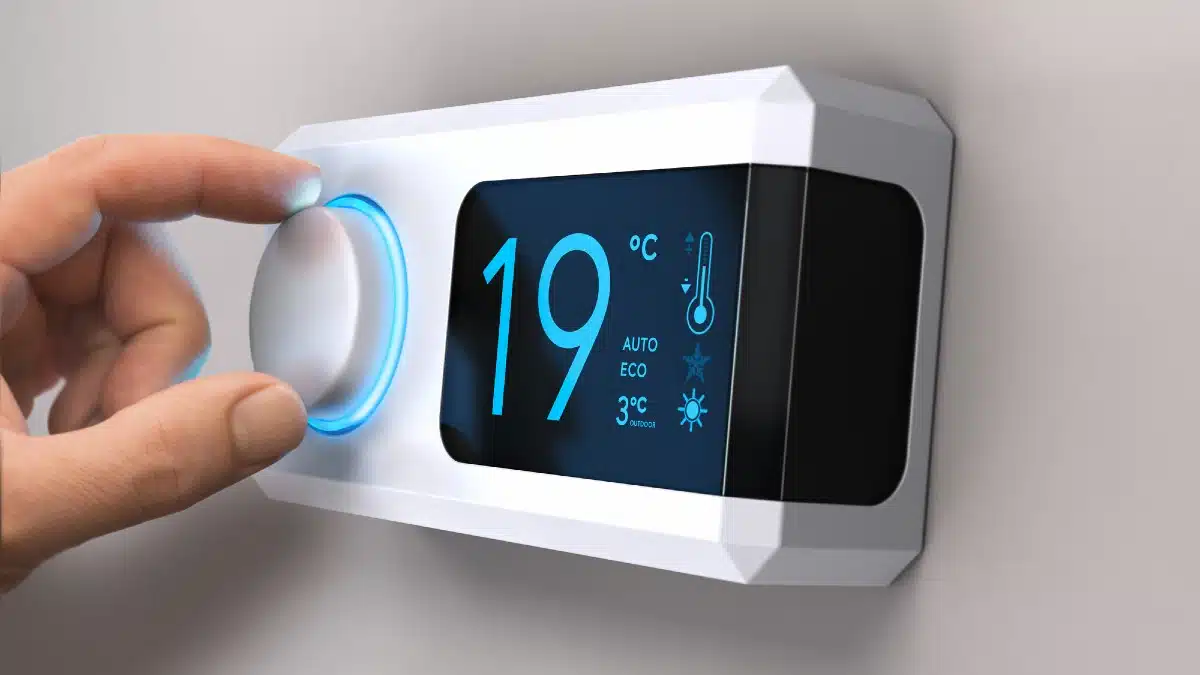Many luxury items provide temporary satisfaction but often lead to long-term financial strain. By choosing to spend money wisely and focusing on essential needs and investments, you can save more, reduce debt, and achieve financial stability. Making conscious decisions about your purchases helps you build a more secure future and ensures that your money is working for you, not against you.
1. Smart home automation packages

Installing voice-controlled lighting, smart thermostats, and automated security systems looks attractive. Yet Americans spend $2,000 to $5,000 on basic smart home setups. The monthly subscription fees for premium features and cloud storage add up fast. Smart doorbells alone cost $200+ with $10 monthly fees. You’ll find basic versions of these gadgets work just as well without the fancy extras. Local storage options cut monthly fees. Traditional thermostats last longer without internet dependencies. Standard light switches work reliably without apps.
2. Designer pet accessories and premium pet services

Pet parents splurge $3,000 yearly on luxury pet services. The pet services market did show significant growth, with the Pet Services Market expanding from USD 29.56 billion in 2023 to USD 32.87 billion in 2024, and projected to reach USD 63.96 billion by 2030. Monthly pet box subscriptions cost $50+, while regular doggy spa days run $100 per visit. Standard grooming and quality pet care cost far less. Your furry friend won’t notice the difference between a $20 or $200 collar.
Follow Invested Wallet For More

If you’ve enjoyed reading our content and are passionate about learning wealth, managing your finances, and achieving financial freedom, we’d love for you to join our community! Click here to follow Invested Wallet for more.
3. Subscription meal prep services

Monthly meal prep subscriptions tempt busy professionals. The costs stack up to $300 monthly for two people. Many subscribers report throwing away spoiled ingredients. The fixed portions often don’t match real needs. Learning basic meal planning saves hundreds monthly. Local grocery stores now offer similar quality ingredients at lower prices. The preset weekly menus limit flexibility for last-minute plans. Local grocery stores now stock pre-portioned ingredients at lower prices.
4. Boutique fitness memberships and personal training

Boutique gyms charge $200+ monthly for access to trendy workouts. The specialized classes and personal training sessions add another $100 per hour. Annual contracts lock people into long-term commitments. Regular gyms offer similar equipment and classes at quarter the price. Free fitness apps provide comparable workout plans. Online fitness programs charge $15 to $30 monthly with no contracts. Local community centers provide affordable fitness classes. Virtual personal training costs 60% less than in-person sessions.
5. Premium streaming service bundles

Households stack multiple premium streaming services, reaching $150+ monthly. The 4K upgrades and premium sound packages increase costs further. Family plans and device sharing limits force extra subscriptions. Rotating between services each month or choosing ad-supported tiers saves significantly. Free library streaming services offer quality content too. Sharing rotation schedules with friends lets everyone enjoy various services. Local TV stations stream news for free. Public media platforms offer educational content without subscriptions.
6. High-end coffee machines and specialty beans

Brewing enthusiasm leads many to buy $2,000+ espresso machines and rare coffee beans. Specialty coffee consumption has increased significantly, with 45% of American adults having had specialty coffee in the past day, up 80% since 2011. Monthly specialty bean subscriptions cost $80+. Equipment maintenance adds $200 yearly. The coffee grinder alone costs $400. A simple French press makes equally tasty coffee. Quality local roasters sell fresh beans at half the subscription prices.
7. Smart appliance upgrades

Upgraded appliances with smart features cost double their basic counterparts. Touch screens break often. Voice commands malfunction. The apps stop working. Basic models last longer. Service calls for smart features cost more. Traditional appliances work reliably without internet connection issues. Standard models need simple maintenance that costs less. Regular appliances keep food cold and clothes clean without fancy extras. The money saved covers years of utility bills.
8. Luxury car lease upgrades

Luxury car leases drain $800+ monthly from budgets. Premium fuel requirements increase expenses. The maintenance packages cost triple regular services. Frequent model changes push people into new leases. Mid-range vehicles provide reliable transportation at half the cost. The key shift happens when drivers focus on reliable transportation instead of brand names. Car enthusiasts find fun ways to customize basic models without huge costs. Factory warranties cover major repairs just like luxury brands.
9. Professional home organization services

Professional organizers bill $100+ hourly to sort belongings. The suggested storage solutions cost another $1,000+. Monthly maintenance visits add up. Many items end up being rebought. Simple storage boxes work well. Online organization guides teach lasting habits for free. Most people can achieve comparable results by dedicating two weekends to sorting and arranging their space. A minimal investment in basic storage solutions yields long-term benefits.
10. Regular spa and wellness treatments

Monthly spa visits cost $200+ for basic treatments. According to the search results, Spa Week is an event held twice a year (in April and October) where hundreds of spas and wellness locations across North America provide two to three full-service treatments for $50 each. Membership packages lock clients into yearly contracts. Facial products recommended cost $300+ monthly. At-home masks work similarly. Local massage schools offer services at 70% less. Drugstore skincare matches expensive brands in quality.
11. Gaming setups and virtual reality equipment

Setting up an advanced gaming space requires $2,000-5,000 for VR headsets, motion sensors, and haptic equipment. Gaming chairs range from $300-800. Quality graphics cards start at $700. Monthly VR game subscriptions add $15-30. Setup needs 150 square feet of clear space for full movement. The social aspects and gameplay matter more than cutting-edge hardware. Most expensive gaming purchases sit unused after the initial excitement fades.
12. Premium credit card annual fees

Most top credit cards charge $450-700 yearly. Benefits include airport lounge access, hotel status upgrades, and $200 airline credits. Cards offer 2-5% back on purchases. Sign-up bonuses range from 50,000-150,000 points. Metal cards weigh 15-25 grams. Premium cards require 720+ credit scores. Card issuers profit from psychology over actual value delivery. Most middle-class budgets work better with standard no-fee cards offering straightforward rewards.
13. Wine club memberships and cellaring services

Wine collectors spend $200-500 monthly on curated selections. Professional cellaring services charge $2-5 per bottle monthly. Collectors insure wine collections valued $10,000+. Membership includes exclusive tastings and first access to limited releases. Most clubs ship quarterly. Understanding wine doesn’t require expensive memberships. Quality bottles exist at every price point. Market research shows 80% of collected wines sell below their purchase price.
14. Smart fitness equipment with monthly subscriptions

Smart fitness equipment demands substantial space and ongoing costs. Monthly content subscriptions add $40. Equipment needs stable internet and dedicated power outlets. Warranties cover 2-5 years. Users exercise 20% more with connected equipment versus traditional gear. Your body can’t tell the difference between streaming and downloaded workouts. Simple resistance bands build strength just as well. Traditional equipment lasts longer without software updates or subscription renewals.
Related: 10 Frugal Lessons I Learned From Being Flat Out Broke

I was living in the middle of a big city all by myself and paying my bills on a server’s salary. I had zero savings and was living paycheck to paycheck just to get by; frugal living was a necessity.
Read More: 10 Frugal Lessons I Learned From Being Flat Out Broke
Related: 20 Easy Ways to Raise A Credit Score Fast

This rating is one of the most common across the nation, and those who have it know that it creates a variety of lending difficulties. Thankfully, it is possible to improve your bad credit score past this subprime rating and get the loans that you deserve.
Read More: 20 Easy Ways to Raise A Credit Score Fast
Follow Invested Wallet For More

If you’ve enjoyed reading our content and are passionate about learning wealth, managing your finances, and achieving financial freedom, we’d love for you to join our community! Click here to follow Invested Wallet for more.
